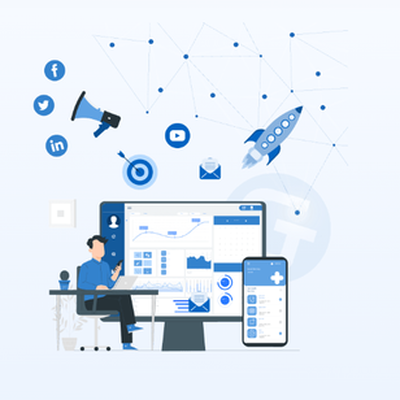Remote Patient Monitoring Software: Revolutionizing Healthcare
Body
Introduction
In today's fast-paced world, where technology drives innovation in every sector, healthcare is no exception. One such groundbreaking innovation is Remote Patient Monitoring Software. This article delves into the transformative impact of this technology, exploring its benefits, applications, and future prospects.
Understanding Remote Patient Monitoring Software
Remote Patient Monitoring Software, often abbreviated as RPM software, is a technological solution designed to monitor patients' health remotely. It utilizes various devices such as wearable sensors, mobile apps, and IoT-enabled gadgets to collect and transmit vital health data to healthcare providers in real-time. This data encompasses vital signs, medication adherence, and other relevant health metrics.
The Role of RPM Software in Healthcare
Enhanced Patient Care
Remote Patient Monitoring Software empowers healthcare providers to deliver proactive and personalized care to patients, regardless of geographical barriers. By continuously monitoring patients' health parameters, medical professionals can detect potential issues early, intervene promptly, and prevent medical emergencies.
Chronic Disease Management
One of the primary applications of RPM software is in the management of chronic diseases such as diabetes, hypertension, and heart disease. Patients suffering from chronic conditions can benefit immensely from regular monitoring of their health status, leading to better disease management and improved quality of life.
Benefits of Remote Patient Monitoring Software
Improved Patient Outcomes
By enabling continuous monitoring and timely intervention, RPM software contributes to improved patient outcomes. Early detection of health deteriorations allows for prompt medical interventions, reducing hospital readmissions and enhancing overall patient wellness.
Cost-Efficiency
Remote Patient Monitoring Software helps in optimizing healthcare resource utilization by minimizing unnecessary hospital visits and emergency room admissions. This results in cost savings for both patients and healthcare providers, making healthcare more affordable and accessible.
Applications Across Healthcare Settings
Home Healthcare
RPM software is particularly beneficial for patients receiving home healthcare services. It enables healthcare professionals to remotely monitor patients' vital signs, medication adherence, and recovery progress, ensuring continuity of care and patient safety.
Long-Term Care Facilities
In long-term care facilities such as nursing homes and assisted living facilities, RPM software plays a vital role in monitoring the health status of residents. It enables staff to track changes in residents' health conditions in real-time, facilitating timely interventions and preventing complications.
Future Trends and Innovations
Integration of Artificial Intelligence
The future of Remote Patient Monitoring Software lies in the integration of artificial intelligence (AI) algorithms. AI-powered RPM solutions can analyze vast amounts of patient data, identify patterns, and predict health outcomes with greater accuracy, paving the way for more personalized and precise healthcare interventions.
Expansion of Wearable Technology
With the increasing popularity of wearable devices such as smartwatches and fitness trackers, the integration of RPM functionalities into wearable technology is expected to surge. This trend will enable seamless monitoring of health metrics and promote active patient engagement in self-care.
FAQs (Frequently Asked Questions)
-
How does Remote Patient Monitoring Software work? Remote Patient Monitoring Software utilizes wearable sensors and mobile apps to collect and transmit health data to healthcare providers in real-time. This data includes vital signs, medication adherence, and other relevant health metrics.
-
Is Remote Patient Monitoring Software secure? Yes, most RPM software solutions adhere to strict security standards to ensure the confidentiality and integrity of patient data. Encryption protocols and secure data transmission mechanisms are employed to safeguard sensitive health information.
-
Can Remote Patient Monitoring Software be used for elderly patients? Absolutely. RPM software is well-suited for monitoring elderly patients, especially those with chronic conditions or mobility limitations. It allows healthcare providers to remotely monitor their health status and intervene promptly if any issues arise.
-
What are the benefits of Remote Patient Monitoring Software for healthcare providers? Remote Patient Monitoring Software offers several benefits for healthcare providers, including improved patient outcomes, cost-efficiency, and enhanced workflow efficiency. By enabling proactive and personalized care, RPM software enhances the overall quality of healthcare delivery.
-
Are there any regulatory requirements for Remote Patient Monitoring Software? Yes, RPM software must comply with regulatory requirements such as HIPAA (Health Insurance Portability and Accountability Act) in the United States to ensure patient privacy and data security. Healthcare providers must adhere to these regulations when implementing RPM solutions.
-
How can patients benefit from Remote Patient Monitoring Software? Patients can benefit from RPM software in various ways, including better disease management, reduced hospital visits, improved medication adherence, and enhanced quality of life. By empowering patients to actively participate in their healthcare journey, RPM software promotes self-care and wellness.
Conclusion
Remote Patient Monitoring Software represents a paradigm shift in healthcare delivery, offering unprecedented opportunities for proactive, personalized, and patient-centric care. By leveraging technology to bridge the gap between patients and healthcare providers, RPM software holds the promise of revolutionizing the way healthcare is delivered and experienced. Embracing this transformative technology can lead to improved patient outcomes, enhanced healthcare efficiency, and ultimately, a healthier society.












Comments